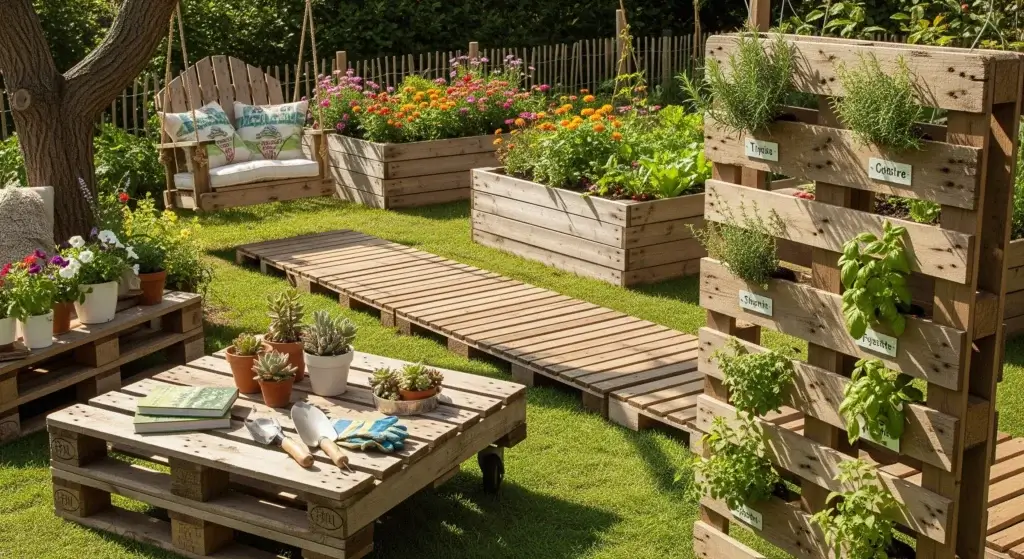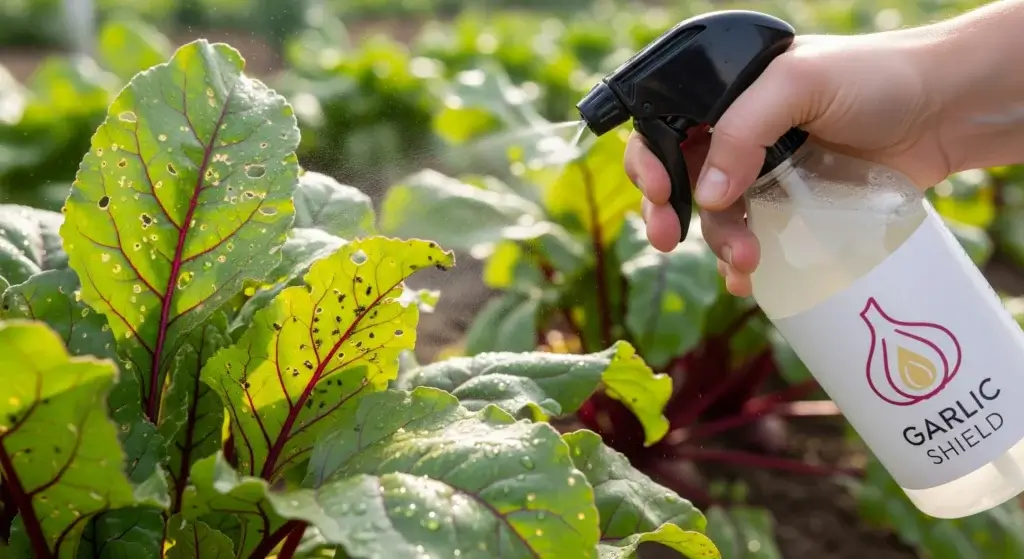
Spring is the perfect time to get your hands dirty and start a garden.
As the days get longer and the weather warms up.
Everything starts to come alive again, which makes it ideal for planting flowers, vegetables, and fruits.
Spring offers the best of both worlds. We get more sunlight, which is like a plant’s superfood, fueling their growth.
Plus, the temperatures are just right – not too hot, not too cold – making it comfortable for both plants and us gardeners.
After a long winter, the soil is usually in great shape too. It’s packed with nutrients and has plenty of moisture, which helps plant roots get established quickly.
As the soil warms up, it also helps with nutrient absorption, which is key for healthy plants.
Starting with creating a DIY garden for your own garden in the spring is a fantastic way to enjoy fresh food.
Also, make your yard look beautiful and feel more connected to the natural world around us.
So, grab your gardening gloves and let’s get started!
Spring Garden Preparation
Before planting, it’s essential to get your garden ready.
Proper preparation ensures healthy plants and a bountiful harvest.
Here are some steps to follow:
Clean up
Winter often leaves behind debris, dead plants, and weeds, which can hinder new growth.
Cleaning up your garden is the first step in preparing it for spring.
Pull out any old plants that didn’t survive the winter.
Weeds compete with new plants for nutrients, so clearing them early is crucial.
Leaves and branches left from winter storms can block sunlight and prevent new plants from growing.
Collect and compost organic materials where possible.
If your garden has old mulch from the previous season, remove it to prevent fungal diseases and pests from thriving in the decomposed matter.
Tool maintenance
Spruce up your space by checking for damage on fences, garden structures, or furniture and plan to fix or replace them.
Sharpen garden tool blades and oil hinges.
Replenish supplies like fertilizer and plant supports.
Soil improvement
Healthy soil is the foundation of a thriving garden.
Spring is the best time to assess and improve your soil for optimal plant growth.
Use a soil test kit or send a sample to a local extension service to check for pH levels and nutrient content.
Most vegetables prefer a pH between 6.0 and 7.0.
Improve soil fertility by mixing in compost, well-rotted manure, or organic fertilizers.
This enriches the soil and provides essential nutrients for plant growth.
If your soil is hard and compacted, use a garden fork or aerator to loosen it.
This enhances drainage and allows roots to grow deeper.
Mulch garden beds
Spread a layer of mulch (e.g., straw, wood chips, or shredded leaves) around plants to retain moisture, suppress weeds, and regulate soil temperature.
Avoid mulching too early.
Wait until the soil has warmed up to prevent trapping cold moisture.

Create a compost pile
Composting is a fantastic way to recycle kitchen scraps and yard waste into a nutrient-rich soil amendment for your garden.
To start your compost pile, gather a variety of organic materials such as fruit and vegetable peels, coffee grounds, eggshells, grass clippings, and fallen leaves.
Layer these materials in a bin or designated area in your yard, alternating between “green” (nitrogen-rich) materials like kitchen scraps and “brown” (carbon-rich) materials like leaves and shredded paper.
To help speed up the decomposition process, remember to turn the compost pile regularly with a pitchfork or shovel.
This aerates the mixture, allowing beneficial microbes to thrive and break down the organic matter more efficiently.
Aim to turn the pile every week or two, and keep it consistently moist like a wrung-out sponge.
With a little patience and effort, you’ll soon have a valuable supply of homemade compost to enrich your garden soil and promote healthy plant growth!
Planning garden layout
Before planting, take time to design your garden layout for maximum efficiency and plant health.
Decide what you want to grow in your garden.
Consider sunlight requirements, spacing needs, and companion planting strategies to ensure that your crops thrive together.
If you have limited space or poor soil quality, raised garden beds or containers can be excellent alternatives for growing plants.
If space is tight, consider using trellises, stakes, or hanging planters to grow climbing plants like cucumbers, beans, and tomatoes.
Start seeds indoors
Some plants benefit from an early start indoors, especially those with long growing seasons.
Vegetables like tomatoes, peppers, and herbs grow better when started indoors before the last frost.
Fill seed trays or small pots with a high-quality seed-starting mix and plant your seeds according to the recommended depth.
Place seedlings near a sunny window or use grow lights to ensure they receive enough light for healthy growth.
Before transplanting, gradually expose young plants to outdoor conditions over a week to help them adjust to temperature changes.
Prune and trim plants
Pruning encourages healthy growth and helps prevent diseases from spreading.
Remove any dead or broken branches from trees and shrubs to promote new growth and prevent decay.
Trim perennials by removing old stems and foliage to encourage fresh shoots and a healthier plant.
Light pruning of ornamental plants improves their appearance and prevents them from becoming overgrown.
Set up an irrigation system
A consistent and efficient watering system is essential for plant health.
Install drip irrigation system.
A drip irrigation system provides a steady supply of water directly to plant roots, reducing water waste and preventing fungal diseases.
Soaker hoses are another excellent option for maintaining moisture levels in garden beds without excessive runoff.
Setting up a rain barrel allows you to store water for irrigation, making your garden more sustainable.
Water your plants early in the morning or late in the afternoon to prevent evaporation and ensure they get enough hydration.
Check for pests and diseases
Look for signs of pests like eggs, larvae, or burrowed holes in the soil.
If you find them, remove them before they cause problems in the growing season.
Avoid planting the same vegetables in the same spots every year to prevent soil depletion and reduce the risk of pests and diseases.

Best Plants for Spring
Spring is the perfect time to grow a variety of plants. Here are some of the best options:
Indoor plants for spring
Flowers
- African violets: Compact, colorful, and perfect for indoor spaces with bright, indirect light.
- Orchids: Elegant and long-lasting blooms that thrive in warm, humid indoor environments.
- Begonias: Bright, showy flowers that do well in pots and prefer indirect light.
- Peace lily: A low-maintenance plant with white blooms that also purifies the air.
- Geraniums: Colorful and easy to grow indoors near a sunny window.
Vegetables
- Microgreens: Quick-growing and nutrient-packed, perfect for indoor containers or trays.
- Herbs: Like basil, parsley, and cilantro are compact and easy to grow on a sunny windowsill.
- Lettuce (Leafy greens): Grow in shallow containers with plenty of light for fresh salads.
- Cherry tomatoes: Dwarf varieties like ‘Tiny Tim’ or ‘Window Box Roma’ can thrive indoors with sufficient light.
- Peppers (Dwarf varieties): Small pepper plants can do well in pots near a sunny window.
Fruits
- Strawberries (Alpine varieties): Compact and ideal for hanging baskets or containers indoors.
- Dwarf citrus trees: Like lemons and limes thrive in bright, sunny spots, and add a fresh scent to your home.
- Figs (Dwarf varieties): Can be grown in large pots indoors with plenty of sunlight.
Outdoor plants for spring
Flowers
- Tulips: Classic spring bulbs that come in a rainbow of colors.
- Daffodils: Bright, cheerful flowers that are deer-resistant and easy to grow.
- Pansies: Cold-tolerant annuals that add vibrant color to garden beds or containers.
- Hyacinths: Fragrant and colorful, perfect for borders or pots.
- Lilacs: Fragrant shrubs that bloom in late spring.
Vegetables
- Lettuce: Fast-growing and perfect for cool spring weather.
- Spinach: A nutrient-rich leafy green that thrives in cool temperatures.
- Peas: Snap peas, snow peas, and shelling peas are great for early spring planting.
- Radishes: Quick to mature and easy to grow.
- Broccoli: A cool-weather crop that can be planted in early spring.
Fruits
- Strawberries: Plant in early spring for a summer harvest.
- Blueberries: Spring is the best time to plant blueberry bushes.
- Raspberries: Hardy and perfect for planting in early spring.
- Apples (Dwarf varieties): Ideal for small gardens and can be planted in spring.
- Cherries: Sweet or sour cherry trees can be planted in spring for future harvests.

Spring Garden Activities Ideas
Gardening is not just about planting—it’s about enjoying the process. Here are some fun spring gardening activities ideas:
- Create a fairy garden: Use any available space to create a miniature landscape. A spot to enjoy your garden. There are no rules for this activity, so use your imagination.
- Sensory garden exploration: Create a sensory garden corner with plants that have different textures, scents, and colors, such as fragrant herbs, velvety lamb’s ear, or vibrant pansies.
- Paint planters: Decorate a flower box or planter with waterproof paint. Once dry, add seeds and watch them grow.
- Design a bug box: Build a bug box to attract beneficial bugs that help flowers and vegetables grow.
- Building a birdhouse or bird bath: Encourage birds to visit your garden.
- Creating a scarecrow: Make a fun scarecrow for your garden.
- Garden journaling: Keep a garden journal to record your planting dates, observations, and successes (and failures!).
- Make DIY garden markers: Labeling plants with creative markers adds a personal touch to your garden. Use painted rocks, wooden sticks, or clay tags.
- Set up a small greenhouse: A greenhouse extends your growing season and protects plants from unpredictable weather. You can make a mini greenhouse using plastic covers or repurposed windows.
- Host a gardening party: Invite friends and family to help with planting while enjoying the outdoors. It’s a fun way to share gardening tips and create memories.
Conclusion
So, there you have it! Creating your own DIY garden for spring planting offering fresh produce, beautiful blooms, and a deeper connection to nature.
From planning and preparing your soil to choosing the right plants and nurturing their growth, each step brings you closer to enjoying the fruits, vegetables, and flowers of your labor.
Don’t be afraid to experiment, learn from your mistakes, and most importantly, have fun with it!
Spring is a time of renewal and growth, and your garden can be a beautiful reflection of that. Happy gardening!
FAQs
It depends on your climate. Most spring plants can be planted once the last frost has passed. Check your local frost dates for guidance.
Radishes, lettuce, and spinach grow quickly and can be harvested in a few weeks.



